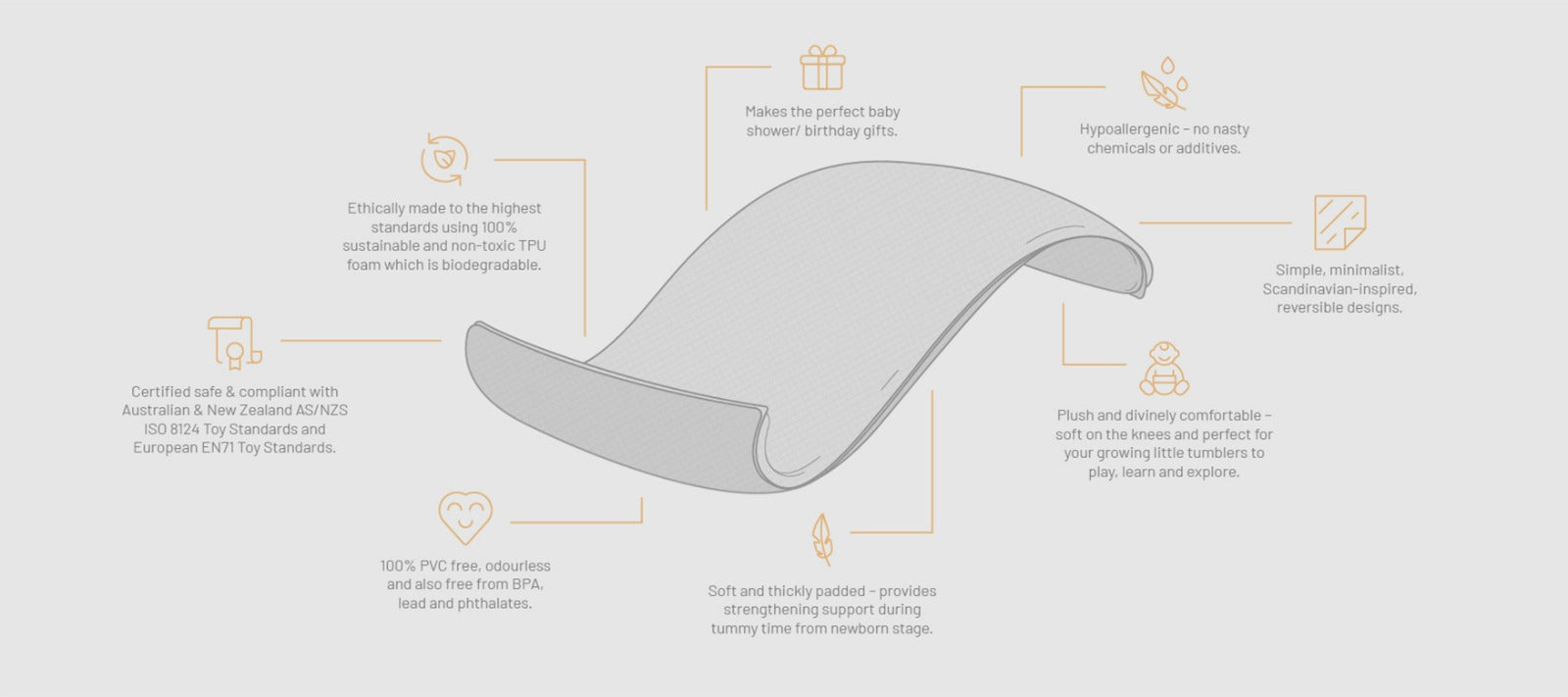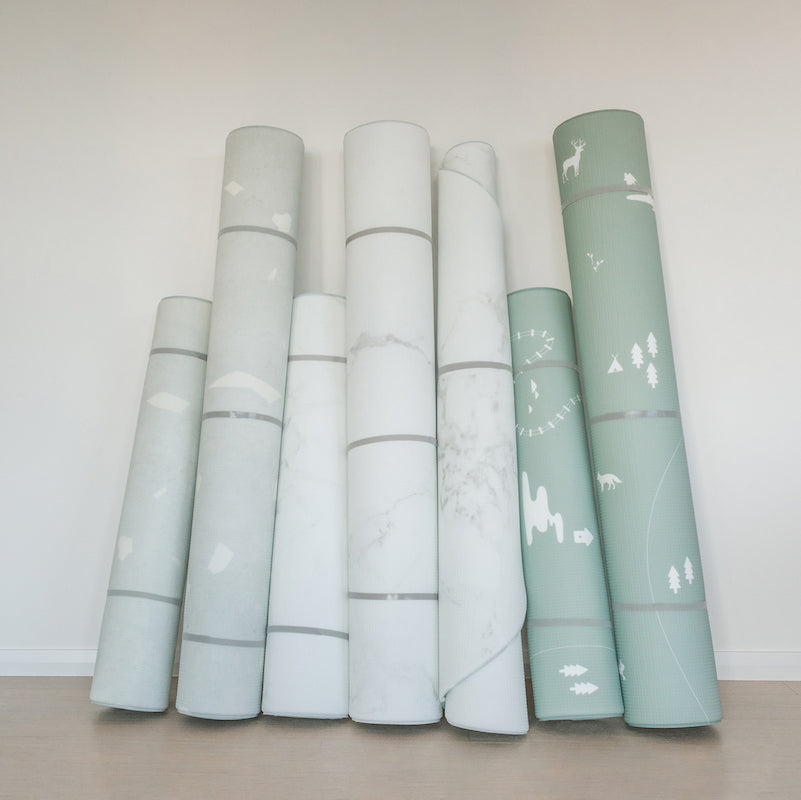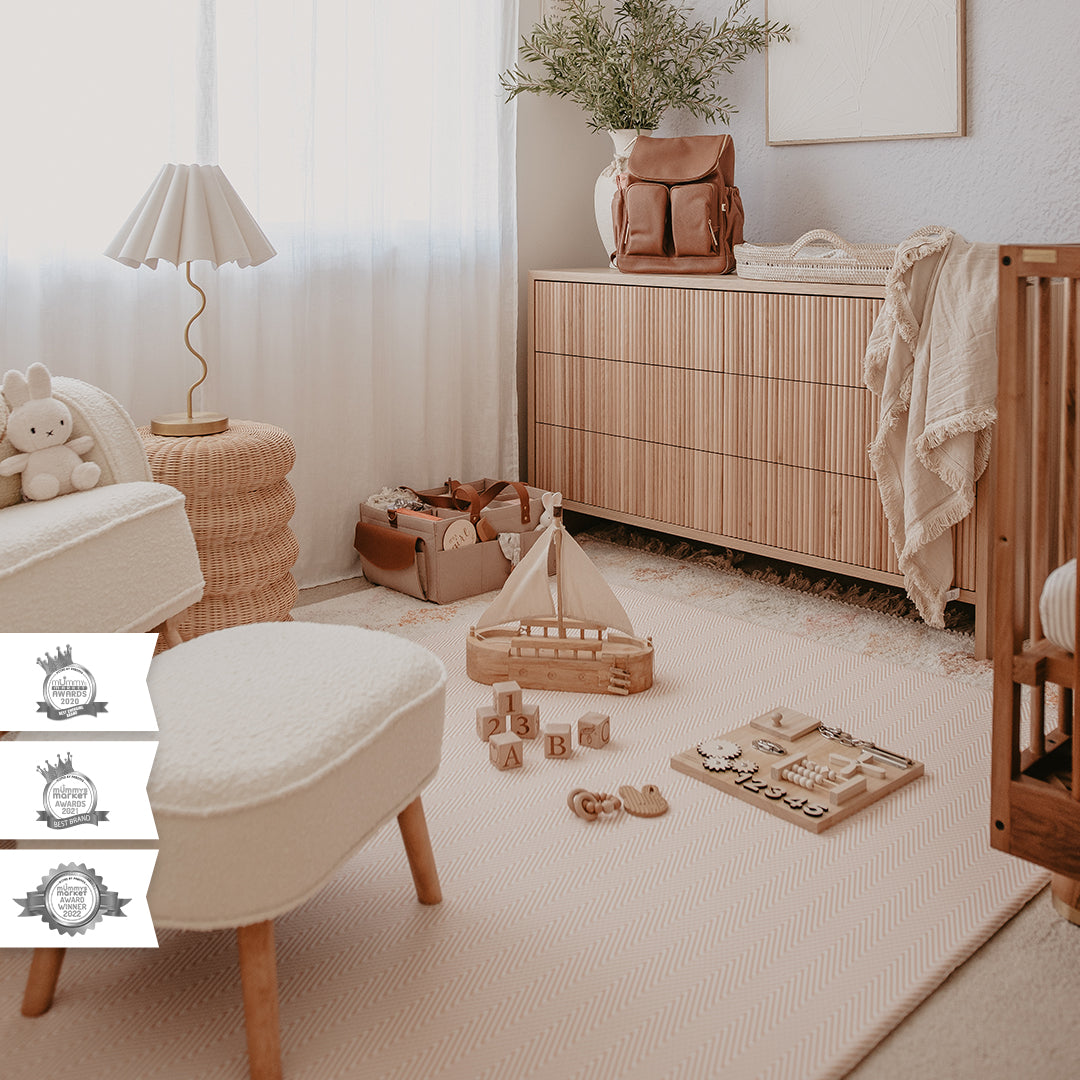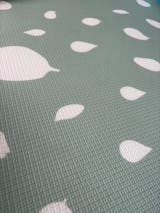
TPU Foam: What Little Wiwa Baby Play Mats Are Made Of and Why

Established in Melbourne, Australia in 2018, Little Wiwa® crafts award winning play mats for the minimalists. They are homed globally with over 30,000 minimalist style lovers since and continue to receive a growing support from the eco-conscious community.
Every Little Wiwa® Play Mat is a premium eco-friendly luxury, sourced and created from 100% sustainable and non-toxic TPU foam. Most importantly, it is non-toxic; free from PVC, BPA, and toxic chemicals (plasticisers, phthalates, cadmium, lead and many more relating to the use of additives in toxic plastic) to provide a product that is safe for babies, adults, and the environment.
While Little Wiwa® Play Mats are minimalist in style, there isn’t anything minimalist on the positive impact they bring to the environment! Our choice to move away from toxic plastics by utilizing a safe alternative with minimal carbon footprint will benefit the earth we leave behind for the following generations to come.
For reasons above, we have chosen to create our play mats from TPU. But what exactly is TPU, and why do we use it?

What is TPU?
TPU (Thermoplastic Polyurethane) is a material belonging to a group of thermoplastic elastomers with physical properties that is often referred to as a bridge between rubbers and plastics. It is highly durable, flexible and offers a multitude of application possibilities in many industries from automotive, agriculture, sports, leisure to medical industries where safety from biological toxicity cannot be compromised.
TPU is an inert material and does not off-gas any volatile organic compounds (VOC,) hence our choice of this material to create play mats for children, who with their developing immune system, are at most risk when exposed to toxic plastics.
Why do we use TPU?
Today, the awareness on dangers of toxic plastics to our health and the issue of sustainability has risen to a stage that is impossible to ignore. And where there is a problem, we hope to try our best to contribute to a solution.
The pervasive use of toxic plastic is universal, and in our attempt to move away from the use of toxic plastics, we have chosen to use a material that is not only safe, but an exceptional one at that.

TPU is:
- Non-toxic
- Durable
- Flexible
- Waterproof
- Shock absorbent
- Sustainable
- Does not off-gas volatile organic compounds (VOCs)
- Free from PVC, BPA, toxic chemicals (VOCs, plasticisers, phthalates, cadmium, lead and many more relating to the use of additives in toxic plastic)
What is off-gassing of VOCs?
The short and simple answer – it is the airborne release of a chemical in vapour form. It happens the most when a product is new. That fresh paint smell, new car smell, new carpet and furniture smell - that’s “off-gassing.”
The thing is many products and materials continue off-gassing even after the “new smell” has gone away – the remaining fumes are just more subtle that we usually stop noticing it. Chemical companies will tell us that everything is off-gassing and while that is true, not everything is off-gassing harmful fumes from chemicals.
Why do we want to avoid VOCs?
While effects of over 80,000 chemicals that have been introduced in the last 50 years have not been all studied, we do know that many of these chemicals can cause health problems. Prolonged exposure can cause headaches, congestion, coughing, respiratory illnesses, hormone disruption as well as a variety of cancers.
Every one of us are at risk but babies and children with their developing immune systems, and adults with weak immune systems or respiratory problems exhibit strongest responses to off-gassing. Any living creature who spends a lot of time near the floor (where flooring, carpets, backing and adhesives off-gas) is at a higher risk, especially babies, toddlers and household pets.
Advantages and disadvantages of TPU?
With every product, comes their advantages and disadvantages. While we have discussed the advantages of TPU as a highly regarded material in safety for children, adults, and environment, they do come with ageing process that is irreversible.
As with common TPU products in our daily lives, from mobile phone cases, textile coatings, conveyor belts to medical tubes and many more applications – TPU can turn yellow over time with prolonged exposure to heat, sunlight, humid conditions, and certain chemicals.
While a gradual fading/discolouration is bound to happen, this ageing process can be accelerated when it is in placed consistently under these conditions, which at times cannot be completely avoided. Particularly with designs in white/lighter colour palettes, the ageing process may present as a yellowing on the surface and/or edges of mat that have been heat-sealed.
To deter the acceleration of its ageing process, placing the product away from direct sunlight and heat whenever possible is encouraged, as well as refraining from using certain strong cleansing agents that is not suitable.
Whilst this ageing process changes the cosmetic aspect, it is worth remembering that it does not change the integrity of the product itself and its safety benefits still outweighs any cosmetic ageing that occurs naturally in most products we use on the daily.
This ageing process is not a fault but simply a characteristic of TPU material.
How to care for your TPU play mats?
With its natural characteristics, TPU does require a little more TLC (tender loving care) and effort to maintain; meaning avoiding harsh chemicals and adopting practice of a general daily clean with a damp, clean cloth and a pH balanced mild soap diluted with plenty of warm water when soiled.
Harsh chemicals products (abrasive agents, bleach, alcohol and essential oils) may damage and strip colour off the mats, as will prolonged exposure to heat and direct sunlight, as have been previously discussed.
Pens, food colouring, crayons and permanent markers can stain the mats the same way they stain any furniture. As well as sharp materials and rough usage may cause damage the same way it can to any items we use.
TPU will be durable and hard-wearing when you use it with care and within reason, but please do remember that while it provides safety, it is not a foolproof item and when it is not cared for, it too will deteriorate like any other items we own.
You can find tips on caring for your play mat in our product care instructions, and our Instagram highlights, stories and feed, where it is a topic we address quite often!
If caring for TPU is not suitable for one’s family, there are other options that are also safe and eco-friendly alternatives from toxic plastics - from organic hemp, cotton to natural rubbers – always choose safety!

















Leave a comment
This site is protected by hCaptcha and the hCaptcha Privacy Policy and Terms of Service apply.